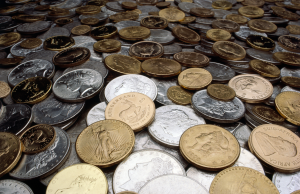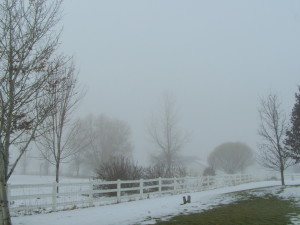They say, “Beauty is in the eye of the beholder.” They say everyone sees the world from their own unique view. They say everything is a matter of perspective. They say two people may view the same exact object but not see exactly the same thing, as they may ultimately develop their own opinions and their own likes or dislikes, in their own specifically shaped memories to that vision. However, generally, everyone sees colors the same: Red is red. Blue is blue. Green is green. Yellow is yellow, and so on. Colors are consistent between everyone, standing as the natural pallet for which visions are universally derived…
But are they really? What about the colorblind? Are their colors consistent with others? What do they see… if not the same thing? And what’s caused them to become colorblind?
Well, for the colorblind, their red is not necessarily red, nor is their blue necessarily blue, or their green necessarily green, and so on. And their colors, in relation to ours, are obviously not the same. So then what are they?
What do the colorblind see? How do they experience the vibrant colors of the world?
With approximately 8% of the male population effected, and .05% of the female population, a relatively large amount of the world is affected. Of all those effected however, not all are effected the same. So the answer really depends on the type of colorblindness an individual possesses. Most commonly, there are three types of colorblindness: deuteranopia, protanopia, and tritanopia.
 This is normal vision.
This is normal vision.
 This is deuteranopia.
This is deuteranopia.
 This is protanopia.
This is protanopia.
 And this is tritanopia.
And this is tritanopia.
The first, deuteranopia, is often considered to be the most prevalent in individuals who are colorblind. Their red isn’t red…but rather grey. Their reds are entirely gone. Purple is gone. Their green also appears slightly grey. And bright colors or “derivatives” of red, like pink, turn grey as well. There are no “green cones” as optometrists would state.
As for the second, also relatively common, protanopia, these individuals experience relatively the same sight. However, their reds and brighter colors appear much darker. From the general perspective, there is not an astounding difference. The eyes of protanopes are said to be missing their “red cones”.
Tritanopia is the rarest of these three kinds- it’s also probably the most unique. The view for individuals with tritanopia can almost be considered surreal, or even hallucinogenic; the color yellow is not yellow, but rather pink. Orange ceases to exist. From the general perspective, almost everything in sight transforms into what can be considered…mostly shades of pink and blue. Certainly, with billions of people in the world, there are all different forms of colorblindness and all different sights and all different experiences (some even report only being able to see the world through black, white, and grey) These three were simply the most common. But what is it that makes the colorblind…blind?
Typically, colorblindness is an inherited trait carried through the X-chromosome (promptly explaining why millions more of men have the issue, while women are less frequently effected). However, it isn’t always a chromosomal abnormality- it’s also common for colorblindness to develop throughout one’s lifetime. While inherited colorblindness typically does not worsen with, the contrary can be true when it’s “contracted”. A surprisingly large number of diseases can lead to one losing their ability to see certain colors: such as glaucoma, diabetes, Alzheimer’s, Parkinson’s, leukemia, or alcoholism. Causes for developed colorblindness don’t end here though. Drugs such as digitalis and chloroquine have also proved to prompt such a side effect. Various industrial chemicals do the same alongside other eye injuries. And…unfortunately…old age can be another platform for colorblindness. Yet one is still left wondering what makes these individuals unable to see certain colors. So what is it exactly that makes their eyes different from others? The answer simply deals with the rods, cones, and abnormal photopigments within our eyes.
So for all these colorblind, all these unfortunately deprived of experiencing the world’s beauty in its thousands upon thousands of colors… is there hope to see the broad expanse of the world’s colors as others do? Is there a cure for colorblindness?

The generally accepted answer, sadly, is no. There is no treatment or cure for colorblindness, whether it be deuteranopia, protanopia, tritanopia, or anything in between or far beyond. However, in one ongoing study, two University of Washington scientists believe they may be onto something. It is estimated that these scientists will even be able to begin testing their medicine on humans within the next two years.
These two individuals- the Neitzes- have studied the disorder for years. In 2009, they discovered that they could utilize gene therapy to inject a human gene behind the retinas of monkeys. Placed in an experiment where these monkeys had to locate color on a screen for a grape juice reward, they initially could not detect the certain necessary colors. However, after the injection behind their retinas, the monkeys were able to detect the correct color… nearly every single time.
Sadly, the technique requires surgery. And with surgery- especially eye surgery- comes a large amount of risk.
So the Neitzes acted as scientists do and were quick to find an alternative mode of inserting the necessary gene. This time, they discovered it could be transfused through a “safe vector’ known as an “adeno-associated virus”. Thomas W. Chalberg Jr., an executive working on the project, described it best by stating, “It’s a protein shell, kind of like a Trojan horse, that gets you entry into the cell. Once you’re there, the DNA gets to set up shop and produce the photo pigment of interest.” This could possibly lead to the curing of colorblindness.
All in all, colorblindness is a relatively common disease effecting many people- plenty of whom don’t even realize. However, as science constantly progresses and moves mankind further and further away from debilitating disorders and diseases, the 21st century will likely progress toward discovering a cure. But amongst the causes of the disorder, the symptoms, the types, and so on, it’s likely rather to be sooner…rather than later.
We just can’t allow ourselves to become blind to colorblindness as time moves on.

By: Isaac Will


































